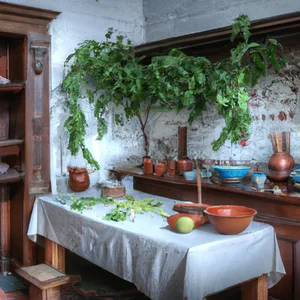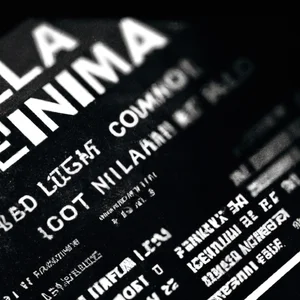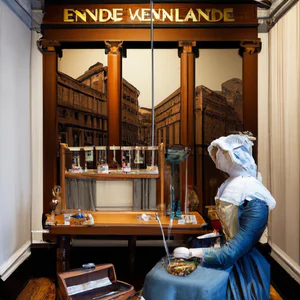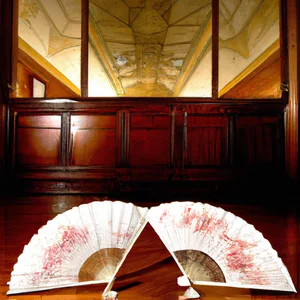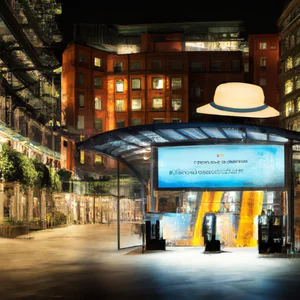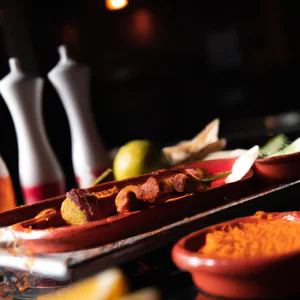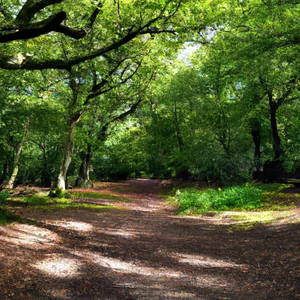Book your experience
Covent Garden Juggling Lesson: Learn from the best street performers
A juggling lesson in Covent Garden is an experience which, believe me, is no small feat! Imagine finding yourself in the beating heart of London, surrounded by street artists who seem to have stepped out of a film. You find yourself there, with a juggling ball in your hand, while the best in the business give you a hand in understanding how not to let it fall to the ground every five seconds.
I don’t know if you’ve ever tried juggling, but it’s a bit like trying to balance a tower of uncooked spaghetti: it seems easy, but then… boom! Yep, the ball rolling away and you feeling a bit like a fish out of water. Yet, there is something incredible in seeing those jugglers who make the balls appear and disappear with disarming ease, as if they had a secret pact with gravity.
I remember when I had my first juggling lesson. I was a little nervous, you know what they say, “nothing ventured, nothing gained”, but I wasn’t sure I would succeed at all. Ultimately, though, I found that while it was a challenge, it was also a ton of fun. And after a while, I started throwing balls in the air with a certain ease. Sure, I wasn’t a champion, but hey, the fact that I didn’t drop them in someone’s face was already an achievement, right?
So, if you ever find yourself in London and feel like putting your skills to the test, a juggling lesson at Covent Garden is a really great idea. You have fun, you meet interesting people and, who knows, maybe you discover a hidden talent. In short, it’s worth trying, even just for the sake of laughing at yourself a little.
Discover Covent Garden: a living stage
An experience that captivates you
Walking through the streets of Covent Garden, I still remember the first time I saw a juggling show. It was a sunny day, and the scent of market flowers mixed with the air vibrant with enthusiasm. A juggler, with an infectious smile, threw colored balls into the air, while the enchanted crowd gathered around him. His ability to maintain the rhythm and interact with the audience created an atmosphere of pure magic. This corner of London isn’t just a place to visit; it is a living stage where extraordinary shows take place every day.
Practical and up-to-date information
Covent Garden is famous for its street artists, who perform daily in and around the square. Performances usually begin in the late morning and continue until the evening. If you want to witness the best artists, I recommend visiting the square during the weekend, when the performances reach their peak. You can find an updated calendar of events on the official Covent Garden website, where the program of performances and special activities is also reported.
An insider tip
A little secret that only true connoisseurs know is to explore the side streets of Covent Garden. Here, you’ll often find lesser-known artists giving intimate and surprising performances, away from the main crowd. These emerging artists are often full of talent and creativity and can offer a unique and authentic experience.
Cultural and historical impact
Covent Garden has a long history as an entertainment centre, dating back to the 17th century. Originally a fruit and vegetable market, the place has transformed into a lively cultural hub. Today, juggling and street performances represent not only an art but also a link to the entertainment traditions that have characterized London for centuries. Street artists, continuing this tradition, carry forward a cultural legacy that has its roots in the local community.
Sustainability in tourism
As you explore Covent Garden, it’s important to consider responsible tourism practices. Many of the street artists use recycled materials for their performances and promote sustainability messages through their performances. Furthermore, it is always a good idea to leave a contribution in the hats of the artists, thus supporting their work and contributing to the cultural scene of the place.
Vibrant atmosphere
Imagine sitting on a bench, sipping coffee while watching a juggler throw an ever-increasing number of objects into the air. The atmosphere in Covent Garden is full of energy and creativity, with the sounds of laughter and applause filling the air. Every corner tells a story, every performance is a work of art.
Activities to try
If you’re feeling inspired, why not try taking part in a juggling lesson? Many artists offer beginner courses right in the heart of Covent Garden. It’s a fun way to immerse yourself in the local culture and hone your skills, while learning from the best.
Myths to dispel
A common misconception is that street performers are improvised or unprofessional. In fact, many of them are highly trained performers with years of experience, who dedicate hours to preparing their performances. This is what makes Covent Garden a center of excellence for the performing arts.
A new perspective
Next time you visit Covent Garden, take a moment to reflect on how a simple juggling act can bring people together, tell stories and stir the soul. We invite you to consider: What are the little wonders you might discover as you explore this extraordinary living stage?
Juggling: ancient and modern art in one place
A Personal Experience
The first time I set foot in Covent Garden, I found myself overwhelmed by colour, sound and palpable energy. A street performer, wearing a top hat and bright jacket, was performing an extraordinary juggling routine. His ability to make the balls and clubs dance in the air seemed almost magical. I remember thinking: Here is a place where the past and present come together in a ballet of creativity. As passersby stopped to applaud, I realized that juggling is not just entertainment, but an art form that tells stories, engages people and, above all, creates community.
Practical Information
Covent Garden is famous not only for its shops and restaurants, but also for its vibrant street artist scene. Every day, dozens of jugglers, acrobats and musicians perform in this open space, transforming it into a living stage. Be sure to visit Covent Garden Market, where jugglers mostly perform from 12pm to 6pm. You can find up-to-date information on performance times on the official Covent Garden website.
Insider advice
A little-known tip is to arrive when performances begin, around 11:30. This will allow you to witness the artists’ preparations and, if you’re lucky, you might even have the opportunity to interact with them before the crowds get bigger. Street artists are often very open and love to share their creative process with anyone who is interested!
Cultural and Historical Impact
Juggling in Covent Garden has its roots in centuries of tradition. From food market to cultural centre, Covent Garden has always attracted artists and performers. Juggling, in particular, has a long history dating back to antiquity, and its presence here testifies to the continued evolution of the performing art in the modern urban context.
Sustainability and Responsible Tourism
In an age where sustainable tourism is more important than ever, many street performers in Covent Garden are committed to using eco-friendly materials and promoting messages of social awareness through their performances. Supporting these artists is a way to contribute to a responsible local economy and a healthier environment healthy.
Immerse yourself in the Atmosphere
Imagine walking among the colorful stalls, surrounded by laughter and applause. The air is filled with the scent of popcorn and ice cream, while the sound of children’s laughter mixes with live music. Juggling here is not just an art, it is an experience that involves all the senses, making you feel part of something bigger.
Try It Yourself
If you’re drawn to the art of juggling, why not try a hands-on lesson? Some artists offer introductory courses where you can learn the basics of juggling. Not only will it be a fun activity, but it will also give you the opportunity to connect with the performers and their fascinating world.
Myths to dispel
A common myth is that juggling is exclusively for children or those who are “naturally talented.” In fact, anyone can learn this art with a little practice and patience. Covent Garden is the perfect place to discover that juggling is accessible to everyone, regardless of age or ability.
A Final Reflection
After watching a juggling performance, have you ever wondered what it takes to become a street performer? Next time you are in Covent Garden, stop and observe: behind every movement there is a story, a dream and, above all, a passion. What story would you like to tell if you had the opportunity to perform on that living stage?
Meet the masters: street artists to admire
Walking through the cobbled streets of Covent Garden, it’s impossible not to be captivated by the vibrant energy that permeates the air. I still remember the first time I witnessed a juggling performance in this iconic square. As the sun sank to the horizon, a street performer, dressed in colorful clothing and an infectious smile, caught the attention of a curious crowd. With impeccable balance and astonishing grace, he twirled balls of all shapes and sizes, transforming a simple act into a magical experience.
The magic of street artists
Covent Garden is a living stage where talented street artists perform daily, bringing life and color to this fascinating neighborhood of London. These masters of juggling, mime and music not only entertain passers-by, but tell stories of passion and dedication. Each performance is a celebration of human creativity, a journey that spans generations of artists who have made this place famous throughout the world.
An insider tip
If you want an even more authentic experience, try visiting Covent Garden during the early afternoon hours, when emerging artists have the opportunity to perform before the bigger names. This is the ideal time to discover fresh and innovative talent, often ready to interact with the public in a more personal way. Don’t forget to bring some change with you to support these artists, whose art is fueled by the generosity of spectators.
Cultural and historical impact
The art of street artists has deep roots in London culture. Covent Garden has long been a hub of creativity and entertainment, dating back to the 17th century, when the flower-filled market attracted merchants and artists from every corner of the city. Today, the tradition continues, serving as a platform for artistic expressions that challenge convention and celebrate diversity.
Sustainable tourism practices
Many street performers in Covent Garden also engage in sustainable tourism practices, using recycled materials in their costumes and equipment, and promoting messages of environmental awareness through their performances. Supporting these artists not only enriches your experience, but also contributes to a more responsible and conscious artistic community.
An experience worth living
For a truly memorable activity, take part in a juggling workshop led by one of the local artists who regularly perform in the square. These sessions offer the opportunity to learn the fundamentals of juggling, while exchanging ideas and laughter with the performers themselves. It’s a unique way to immerse yourself in local culture and bring a piece of Covent Garden home.
Myths and misconceptions
A common misconception is that street performances are only for tourists. In fact, Covent Garden performers attract a diverse audience, including local families and groups of friends who come together to enjoy the magic of the moment. The atmosphere is always welcoming and inclusive, inviting everyone to participate.
A final reflection
As you leave Covent Garden, ask yourself: what stories have these artists told you through their performances? In a world where we are often distracted by screens and technology, the beauty of street art reminds us of the importance of human interaction and creative expression. Which street artist impressed you the most and why?
Practical lessons: hone your juggling skills
A personal experience not to be forgotten
I remember the day I stopped in Covent Garden, attracted by the sparkling energy that hovered in the air. As I watched a young juggler perform an impressive display of balls and torches, I realized that it was not just a sight to behold, but a true art form to learn. Curiosity pushed me to participate in an impromptu lesson organized by one of the street performers. That session, between laughter and embarrassing falls, gave me not only new skills, but also a special bond with the Covent Garden community of artists.
Practical and up-to-date information
If you’d like to try your hand at juggling, Covent Garden offers plenty of opportunities. Local juggling schools, such as The Circus Space, offer courses for all levels, from beginners to experts. Every Saturday, Covent Garden Market hosts free workshops where visitors can learn the basics of juggling and hone their skills under the guidance of expert performers. Don’t forget to check their official website for times and availability, as classes may vary.
An insider tip
A little-known trick to improve quickly is to practice in pairs. Find a juggling partner and challenge yourself to throw and catch objects while telling funny stories. This not only makes learning more enjoyable, but also helps you maintain focus and develop a sense of rhythm.
The cultural impact of juggling in Covent Garden
Juggling has deep roots in Covent Garden’s history, dating back to the 17th century, when the market was a meeting point for artists and merchants. This place has become a symbol of creativity and entertainment, where juggling is seen not just as a pastime, but as an art form that brings people together. The continued presence of street artists helps keep this tradition alive, making Covent Garden a vibrant stage for emerging and established talent.
Sustainable tourism practices
When attending these classes, consider bringing along eco-friendly juggling equipment, such as balls made from recycled materials. Many local artists are promoting sustainable practices, and choosing eco-friendly equipment is one way to support this initiative.
An atmosphere to experience
Imagine yourself among an enthusiastic crowd, with the sun shining above you and laughter ringing in the air. Every time an object flies overhead, a chorus of cheers goes up, as other spectators join in to learn. The feeling of learning a new skill, surrounded by artists and enthusiasts, is simply magical.
An activity worth trying
If you feel like putting yourself to the test, take part in one of the juggling workshops held in Covent Garden. Not only will you learn new techniques, but you will also have the opportunity to meet people with the same passion as you. Take some juggling equipment with you and continue practicing after your visit.
Myths to dispel
A common myth is that juggling is only for young people. In fact, people of all ages can learn and enjoy this activity. Juggling is a fantastic way to improve coordination and concentration, and is accessible to anyone, regardless of age or ability.
A personal reflection
Have you ever thought about how liberating it can be to try something new, like juggling? In an often frenetic world, dedicating time to such fascinating art is not only a way to have fun, but also an opportunity to connect with others and with the culture of a place. We invite you to consider this experience: who knows, it could become your new passion!
Hidden history: Covent Garden’s past
I remember the first time I set foot in Covent Garden. As I walked among the stalls and jugglers performing, I was struck by the vibrant energy of the place. However, it was only when I stopped to read an information plaque that I discovered the fascinating and, at times, mysterious history of this historic square. Covent Garden is not just a modern entertainment centre; it is a crossroads of stories that date back centuries, when it was a fruit and vegetable market frequented by Londoners.
A journey through time
Covent Garden began its life in the early 17th century as a convent garden, belonging to Westminster Monastery. As the years passed, this place transformed into a lively market, becoming a point of reference for commerce and culture. Today, walking through its streets, you can still perceive echoes of that past, with historic architecture that tells stories of an era in which trade flourished and the squares were animated by songs and parties.
A little-known tip: if you really want to immerse yourself in the history of Covent Garden, try to visit the London Transport Museum, located nearby. Here you can discover how transport has influenced the development of the area and, consequently, the social and cultural life of London.
Cultural impact
Covent Garden’s past has left a significant cultural legacy. It has become a symbol of creativity and street art, a place where emerging talents can perform and interact with the public. This not only helps keep the tradition of juggling and live performances alive, but also creates a tourist attraction that supports the local economy.
In an age where sustainable tourism is more important than ever, Covent Garden offers an example of how artistic performances can be integrated into the urban fabric without compromising its authenticity. Supporting street artists not only enriches the visitor experience, but also helps preserve a unique cultural heritage.
An experience not to be missed
For an authentic Covent Garden experience, consider attending one of its historic juggling performances. Every afternoon, artists gather in the main square, bringing a piece of living history with them. Don’t miss the chance to be part of this show - you can even learn some techniques directly from the artists!
Final reflection
As you walk among the artists and stories that populate Covent Garden, ask yourself: How can the history of this place influence the way we experience tourism today? The next time you find yourself enjoying a juggling show or strolling through the stalls, remember that every laugh and every applause is part of a legacy that lives on.
Unique Tips: How to Become a Local Performer
An inspiring personal experience
I still remember my first meeting with a juggler in Covent Garden. It was a sunny day and the vibrant atmosphere of the market was contagious. An artist, with a dazzling smile, caught the attention of a group of passers-by as he tossed hundreds of colored balls into the air. At that moment, I asked myself, “How can I become part of this world?” The answer was a journey that led me to discover not only juggling techniques, but also the beating heart of Covent Garden.
Practical information for aspiring performers
If you dream of stepping onto the floor of Covent Garden as a performer, there are some important steps to follow:
- Registration: First of all, you will need to register with the Covent Garden Street Performers’ Licensing Scheme. This license will allow you to perform in this iconic space.
- Auditions: After registration, you will have to pass an audition that tests your skills. Don’t forget to bring your best smile and an act that can impress!
- Timing: Performances can take place every day, but the weekend is the ideal time to attract a larger audience.
For further details, you can consult the official Covent Garden website, where you will find up-to-date and useful information.
An insider tip
A little-known trick is to visit Covent Garden on weekdays, when the crowds are a little smaller. This allows you to test your skills without the pressure of a large audience and perfect your act before performing on peak days.
The cultural impact of juggling
Juggling in Covent Garden is not just a pastime; it is part of an age-old tradition that dates back centuries. This place has been a crossroads of artists and performers, helping to shape London’s cultural identity. Juggling, in particular, has an educational value, as it offers performers the opportunity to develop communication skills and creativity.
Responsible tourism practices
Becoming a local performer is not just about having fun, but also about respecting the environment and the community. Many artists in Covent Garden are committed to sustainable practices, using eco-friendly equipment and promoting environmental awareness messages during their performances. If you choose to perform, please consider contributing to this cause as well.
Soak up the atmosphere
The liveliness of Covent Garden is palpable: the scent of culinary specialities, the sound of street musicians and the laughter of children admiring the magic of jugglers create a unique sensory experience. Imagine throwing yourself into this dance of colors and sounds, where each performance becomes an ephemeral work of art.
An activity worth trying
If you don’t feel ready to perform, attend one of the many juggling workshops held in the area. Here, you can learn the fundamentals of juggling and perhaps discover the performer in you.
Myths to dispel
A common misconception is that becoming a street artist requires only innate talents. In reality, most performers have put in hours of practice and preparation. Perseverance and passion are essential to emerge in the world of juggling.
A final reflection
Have you ever thought about expressing your creativity in a different way? Covent Garden is not just a place to observe, but an open stage where each of us can become part of history. Are you ready to embark on this adventure?
Sustainability in tourism: the future of performance
Walking through the cobbled streets of Covent Garden, you can’t help but notice the vibrant mix of colours, sounds and infectious energy that fills the air. I remember a afternoon in particular, when I found myself in front of a group of street artists who, with their skill and creativity, transformed the sidewalk into a stage. But as I clapped and smiled, I couldn’t help but think about how these performances could be sustainable and have a positive impact on the community.
A commitment to a sustainable future
In recent years, Covent Garden has made great strides towards more sustainable tourism, not only to preserve its cultural heritage, but also to ensure that artistic performances can continue to thrive. According to the Covent Garden London report 2023, the area has implemented measures to reduce its environmental impact, such as using recyclable materials and promoting low-carbon events.
An insider tip
If you want an authentic and sustainable experience, try to attend one of the juggling workshops held regularly. Not only will you have the opportunity to hone your skills, but you will also help support local artists who are committed to eco-friendly practices. Many of them use handmade equipment and natural materials for their shows, offering a more sustainable alternative to disposable plastic items.
Covent Garden’s cultural heritage
Covent Garden is not just an entertainment venue, but a vital part of London’s cultural history. Its traditions of juggling and performing arts date back to the 17th century, when the market was the beating heart of the city. Today, these traditions continue to live on, but with a careful eye on sustainability. Street artists are not just entertainers, but custodians of a culture that evolves and adapts to modern challenges.
Responsible tourism practices
When visiting Covent Garden, consider adopting some responsible tourism practices. For example, choose to use public transportation or bicycles to explore the area, and try to support local restaurants and shops that promote sustainability. Don’t forget to bring a reusable water bottle with you to reduce plastic use.
An activity not to be missed
For a truly unique experience, try attending one of the many sustainable juggling events, such as the London Juggling Convention, where performers from around the world come together to share their skills and passion for the art of juggling . You’ll not only see incredible shows, but you’ll also learn from the best.
Myths to dispel
A common misconception about street performances is that they are exclusively for tourists. In fact, many Covent Garden performers are professionals who work hard to keep the art of juggling and live performance alive. By supporting them, you not only contribute to a sustainable local economy, but you become part of a vibrant and passionate community.
Final reflection
As you enjoy performances in Covent Garden, ask yourself: How can you help make tourism more sustainable in your daily life? Every little action counts, and the future of performance art depends on our ability to protect and enhance the world around us surrounds.
Food and juggling: taste typical dishes while learning
Walking along the busy streets of Covent Garden, the inviting scent of fresh, spicy food mixes with the vibrant air of street entertainment. One day, while watching a talented juggler throw colored balls into the sky, I realized that his art was not only a display of skill, but an invitation to also enjoy the local cuisine. In that moment, I understood that juggling and food in Covent Garden are intertwined in a unique sensorial experience, where the stage is as much visual as gustatory.
A culinary journey between artistic performances
Covent Garden is famous not only for its street artists, but also for its rich gastronomic offer. From markets to restaurants, you’ll find a variety of classic British and international dishes. During a break from admiring the jugglers, don’t miss enjoying a crispy fish and chips or a hot pie, accompanied by a pint of local craft beer. This fusion of food and entertainment makes the atmosphere even more engaging, creating a sense of community among visitors and performers.
An insider tip
If you want an authentic experience, try to arrive at lunchtime, when many street artists offer mini performances while food vendors prepare their dishes. This is the ideal time to enjoy delicious street food while being enchanted by the skills of jugglers and acrobats. A little-known tip is to bring a small picnic with you, to enjoy while you enjoy the performances. This way, you can choose your favorite dishes and enjoy the atmosphere without having to give up anything.
The cultural impact of food and juggling
Juggling in Covent Garden is not just entertainment; it is part of a cultural tradition that dates back centuries. Historic markets were meeting places for artists and vendors, where live performances attracted visitors from far and wide. Today, this heritage lives on, with jugglers telling stories through their performances, while food vendors offer dishes that celebrate British culinary traditions. This exchange creates a link between history and the present, making every visit to Covent Garden an educational and gustatory experience.
Sustainability and responsibility
In an age where sustainable tourism is more important than ever, many restaurants and food vendors in Covent Garden adopt responsible practices, using local and organic ingredients. Choosing to eat here not only supports the local economy, but also contributes to reducing environmental impact. Furthermore, many street artists are engaged in eco-friendly practices, using recycled materials for their equipment and promoting sustainability messages through their performances.
An experience not to be missed
For an unforgettable experience, I recommend taking part in one of the juggling courses held regularly in the area. Here, you can learn the fundamentals of juggling while tasting dishes prepared by local chefs. This combination of learning and tasting will allow you to fully immerse yourself in the culture of Covent Garden.
Final reflection
As you enjoy the food and artistic performances, ask yourself: What story lies behind each dish and each toss? Juggling and dining in Covent Garden is not just entertainment and nourishment, but a way to connect with the culture and traditions that make London so fascinating. Which dish or performance impressed you the most?
Special Events: Participate in street festivals
When I first set foot in Covent Garden, I never imagined I would find myself in the middle of a street festival that seemed straight out of a dream. It was a sunny day, and the air was filled with excitement and music. The crowd moved like a stormy sea, and every corner was alive with artists performing incredible performances. I didn’t think twice and joined a group of spectators, ready to be carried away by the magic of the moment.
An experience not to be missed
Street festivals in Covent Garden are not just events; they are a true celebration of creativity and art. Every year, particularly during the summer season, the neighborhood becomes a living stage where jugglers, musicians and acrobats perform for the public, creating a vibrant and engaging atmosphere. It is a unique opportunity to see locally and internationally renowned artists at work, and you can often encounter emerging talents who bring freshness and innovation to artistic traditions.
Tips for participating
If you decide to attend one of these festivals, here’s a tip that few people know: arrive early. The best seats to enjoy performances are front row, and the most popular festivals attract large crowds. Also, don’t forget to bring some coin to give to the artists; it’s a way to support their work and pay homage to their art.
A cultural impact
The tradition of street performers in Covent Garden dates back centuries, when the market was a bustling center of trade and a crossroads of cultures. Today, this legacy continues to thrive, helping to keep London’s history and culture alive. Street events not only provide entertainment, but are also a way to preserve and promote performing art, encouraging a new generation of artists.
Sustainability and responsibility
Participating in these events is also a way to embrace sustainable tourism practices. Many artists use recycled materials for their performances and promote messages of environmental awareness through their performances. Supporting these initiatives is an excellent way to contribute to responsible tourism.
Soak up the atmosphere
Imagine walking through the cobbled streets, surrounded by bright colors and joyful sounds. The smells of street food mix with laughter and applause, creating a sensory experience that captivates you. It’s a time when you can let go, fully immerse yourself in the vibrancy of London’s spirit and be inspired by the creativity that surrounds you.
An opportunity not to be missed
If you’re in London during a festival, don’t miss the chance to try an informal juggling or acrobatics workshop. These experiences can often be found in conjunction with events, and are perfect for those who want to test themselves and get closer to the world of performance art.
Final reflections
Have you ever thought about attending a street festival? These events offer not only entertainment, but also the opportunity to discover extraordinary talent and connect with local culture in a unique way. Next time you find yourself in Covent Garden, remember: life is meant to be lived, and every performance is an invitation to be part of the magic.
The atmosphere of Covent Garden: an authentic experience to live
Walking through the cobbled streets of Covent Garden, I found myself immersed in an atmosphere that seemed to dance between the past and the present. I vividly remember one sunny afternoon, when a group of street performers began performing a juggling performance that caught the attention of passers-by and tourists. Colorful balls flew through the air, while laughter and applause filled the air. In that moment, I understood that Covent Garden is not just a place, but a living stage where every visitor can become part of a collective and authentic experience.
A vibrant and engaging atmosphere
Covent Garden is renowned for its dynamic atmosphere, where culture intertwines with everyday life. With street artists regularly performing in the central square and along the surrounding streets, the neighborhood is a true hub of creativity. Every day, you can discover new performances, from juggling to acrobats, creating an ever-changing stage. According to Covent Garden Management, over 100 street artist performances take place every week, making this venue a hotspot for live entertainment.
An insider tip
A tip that few people know is to visit Covent Garden during the week, preferably on weekdays. This way, you will have the opportunity to enjoy more intimate performances and interact directly with the artists, who are often more willing to share their techniques and their love of the art. Don’t forget to bring some change with you to donate to the artists; it is a gesture that is greatly appreciated and helps to keep the magic of this place alive.
The history of Covent Garden
The history of Covent Garden is fascinating and dates back to the 17th century, when it was a fruit and vegetable market. Today, the square is a symbol of regeneration and cultural innovation. In recent decades, the neighborhood has undergone a transformation, becoming a center for arts and entertainment. Each performance tells a piece of this story, uniting generations in a continuous dialogue between the past and the present.
Sustainability and responsibility
In a world increasingly aware of environmental impact, Covent Garden is committed to promoting sustainable practices. Many street artists use recycled materials for their performances and some events are organized in collaboration with local initiatives to reduce environmental impact. Participating in these exhibitions is not only a way to have fun, but also to support responsible tourism.
An unmissable experience
If you want to immerse yourself further in the atmosphere of Covent Garden, I recommend taking part in one of the juggling workshops that are held regularly in the square. These lessons will not only teach you the basics of juggling, but will also allow you to connect with other enthusiasts and have an interactive and engaging experience.
Myths to dispel
A common misconception about Covent Garden is that it is just a tourist trap, devoid of authenticity. In reality, the presence of local artists and their stories make this experience unique and authentic. Each artist brings their own personality and talent, creating an atmosphere that is anything but monotonous.
Final reflection
As I left Covent Garden, I wondered: how many more stories and talents are hidden behind the scenes?. Each visit offers the chance to discover something new, making each experience unique. I invite you to visit this magical corner of London and let yourself be transported by its vibrant atmosphere. What will you discover during your next visit?

 Architecture and Design
Architecture and Design Cities and Regions
Cities and Regions Culture and History
Culture and History Events and Festivals
Events and Festivals Fashion and Shopping
Fashion and Shopping Food and Wine
Food and Wine Nature and Adventure
Nature and Adventure Unique Experiences
Unique Experiences


















